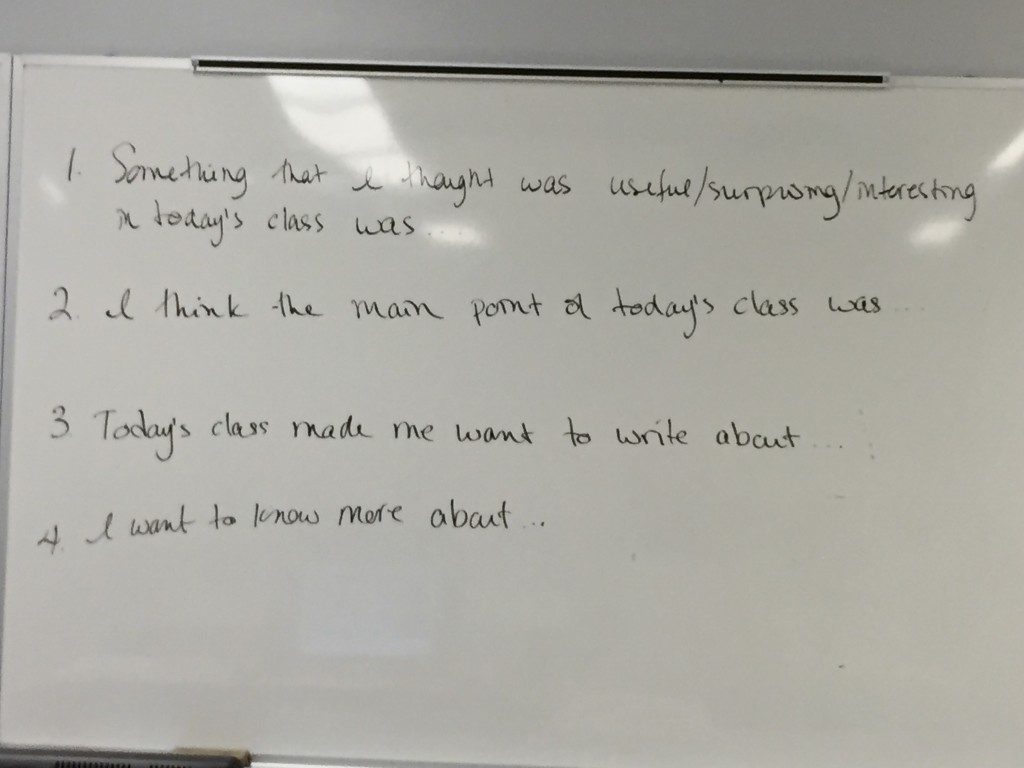Today, I tried something new with my second-year students. It’s a variation on the minute paper that many teachers use to get some quick, informal feedback from students. This is what I wrote on the board:
Today’s class was mostly discussion of the first ten chapters of Frankenstein, which we are looking at from a feminist perspective (the course is about critical theory and ‘alternative’ perspectives on canonical texts). In the class today, I had a few objectives. First, I wanted the students to start discussing the novel as a whole, with the three essay topics informing their discussion. Secondly, I wanted them to begin keeping track of their observations while they read and discuss. Thirdly, I wanted them to start compiling quotations and other support for use when it comes time to write.
Here’s how the class went:
1. I reviewed the essay questions. When it comes time to write, each student will choose one of the three proposed topics, but for the in-class discussions, they have to address all three themes (alienation, gendered responsibilities, and social virtues). We talked a bit about what each of those themes means, and I drew their attention to some thoughts in Mary Shelley’s introduction to her 1831 version of the novel.
2. I introduced the observation table:
| Aspect | Introduction | Letters | Chapter 1 | Chapter 2… |
| Characters | ||||
| Plot points | ||||
| Alienation & loneliness | ||||
| Duty & responsibility | ||||
| Virtue & Society | ||||
| Techniques/devices | ||||
| What to quote | ||||
…and told them to reformat it as they see fit.
3. Their first group task was to discuss the two main events of the first ten chapters, and relate each one to the three themes. Then, still in groups, they had to start filling in their tables. I suggested a few ways to split up the task, but let them decide what worked best for their group.
4. I finished the class with the four writing prompts. I told them to choose any two, and write two or three sentences. I told them they could include their name, especially if there was something they wanted me to respond to, or omit their name if they preferred to remain anonymous.
The results
Honestly, I need to reread their responses if I want to discuss the specifics, but I will say a few things. First, I was quite happy with the level of engagement. All students wrote about two things, and wrote at least three sentences. They all explained their points, elaborated on their thoughts, and connected their response to specific ideas from the discussion. Secondly, I was happy to see that students chose widely from the four prompts, and that their responses demonstrated different ways of interpreting the prompt. So, for instance, in response to “I want to know more about…” one student expressed some confusion with one the essay topics, while another expressed interest in ‘real life’ Frankenstein experiments. For the latter, I posted a link to our class Facebook page, and thanks to the former, I will start next class with a rewording of the essay topic in question, and see if that clears things up a little.
Suffice it to say, I believe the experiment was a success, and I will certainly use it again.
